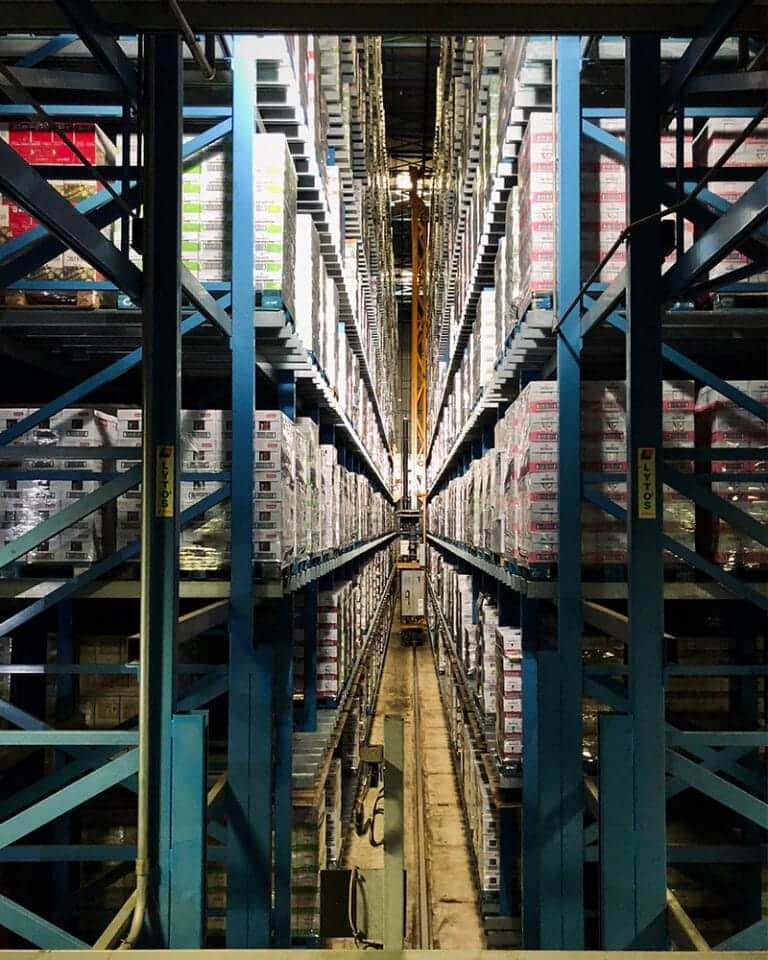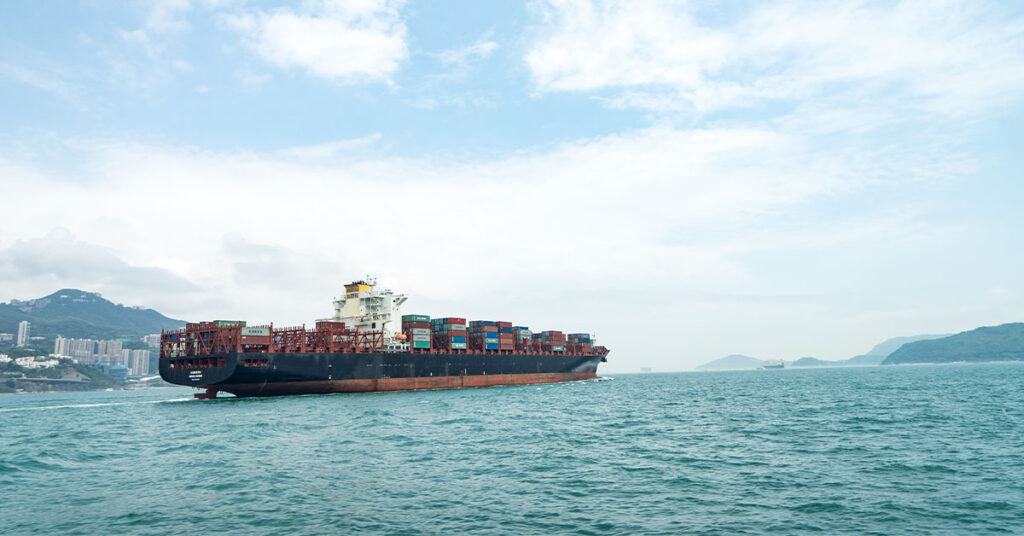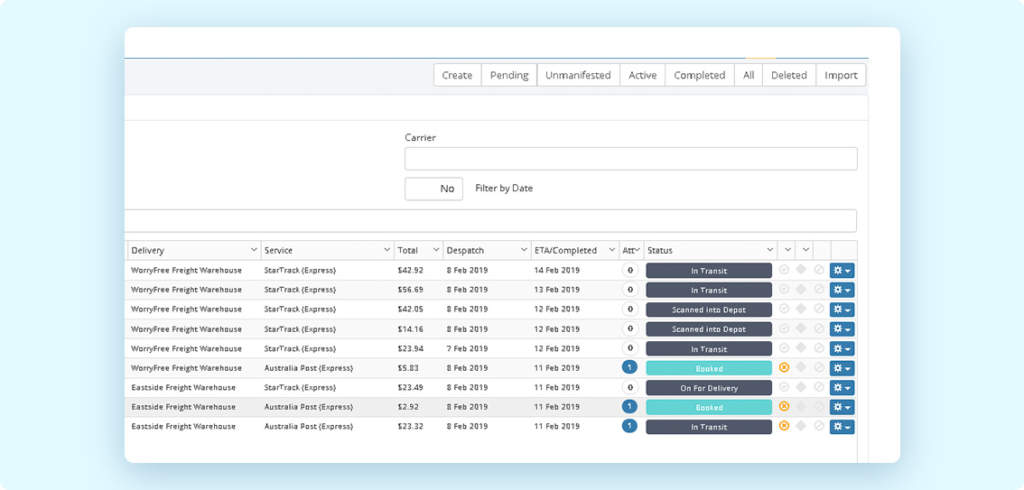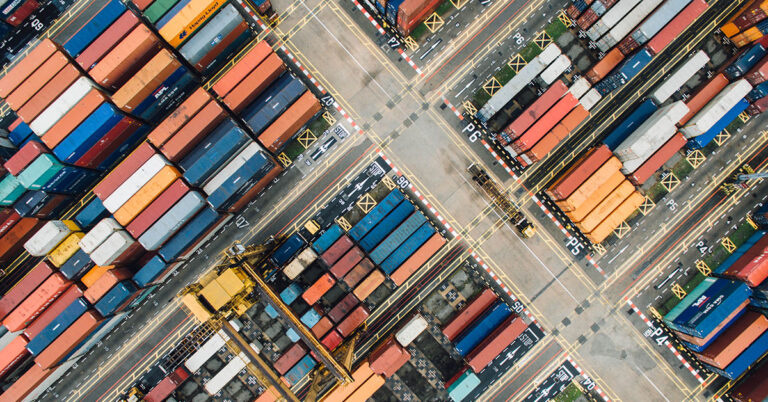As supply chains around the world continue to grow, new and smarter ways of shipping goods inevitably emerge. This is where intermodal shipping comes into play. In this article, we’ll run you through the ins and outs of the innovative shipping method and how it can benefit your business.
What is intermodal shipping?
In a nutshell, intermodal shipping is a delivery method that combines multiple forms of transport to move goods from one place to another.
A key feature of intermodal shipping is the use of standardised containers. These containers ensure that freight can be transferred between transportation methods as seamlessly as possible while reducing the risk of damage.
For example, an order could be packed at a distribution centre and throughout each leg of its journey – whether by road, rail, air or sea – the goods will remain in that one container until they reach their destination.

What are the benefits of intermodal shipping?
Intermodal shipping provides numerous benefits for your business and customers, as well as the environment.
Cost savings
One of the main benefits of intermodal shipping is cost-effectiveness. By utilising multiple transportation methods, you can find savings by moving greater quantities of freight, streamlining loading times, and enjoying a simplified planning process.
Greater efficiency
We’ve already discussed using standardised containers as a benefit of intermodal shipping. But it’s important to stress just how vital they are when considering the method’s efficiency. Standardised containers offer reduced handling, greater security and consolidated tracking. Each aspect streamlines the shipping process from start to finish.
Environmental impact
Due to the nature of intermodal shipping, businesses and their partners have the freedom to choose the most efficient combination of transportation methods to reach their desired destination. This means, you can effectively reduce carbon emissions, noise pollution and fuel usage through these choices.
Sustainable shipping has the added benefit of appealing to eco-conscious customers, giving you an additional selling point.

What are examples of intermodal transportation?
There are typically 4 types of intermodal transport: road, rail, air and sea. Here’s how each functions when a company uses intermodal shipping.
Road
Trucks are often used to book-end the intermodal shipping process. This is due to their flexibility when moving goods to and from a distribution centre or port of arrival. If you’re wondering what the difference is between intermodal and standard road freight, the simplest answer is that intermodal shipping combines the benefits of road freight with the positives of all the other methods.
Rail
Rail offers efficiency over long distances and the ability to move large quantities of goods at a time. For this reason, rail is an excellent choice for intercontinental and cross-country legs during intermodal shipping.
Air
Moving goods via air is a crucial step of intermodal shipping in the age of globalisation. Air freight connects locations over great distances and offers impeccably fast and reliable transportation.
Sea
Where the process of ‘shipping’ originally got its name. Including ocean legs during intermodal shipping offers users incredible capacity to move items in bulk. While substantially slower than planes, cargo ships are a cost-effective way of reaching international destinations in situations where time isn’t a crucial factor. Until someone goes and blocks the Suez Canal, of course.
How does intermodal shipping work
The intermodal shipping processes can be easily stepped out, which is why it’s a preferred choice for those looking to streamline their logistics.
- Booking is the initial step where transportation methods are chosen and space is booked. Careful route planning during this stage can minimise delays.
- Documentation includes the preparation of any necessary paperwork for your goods, such as instructions, customs forms and receipts.
- Pickup is where goods are collected from one leg to continue on to the next, typically by truck. This is simplified due to the standardised containers.
- Transit details the journey of your goods. While in transit, your consignment will receive a single tracking number, even when undergoing multiple legs and using different transport methods.
- Delivery is the final stage, where your goods are unloaded from their container, whether that’s at a warehouse, distribution centre or shop.

How to successfully implement intermodal shipping
If you like the sound of intermodal shipping and the benefits it can offer your business, here’s some handy advice on how to implement it.
Route planning
Careful route planning can minimise delays, optimise transit times and provide multiple transportation benefits. For example, you can combine maritime and air shipping to reach remote areas while reducing the cost of solely shipping via air.
Container and packaging selection
Since intermodal shipping uses the same container throughout the journey, you should be mindful of how items are packed. Using suitable materials from the start can save you space, protect your goods and speed up loading and unloading times. Several container sizes are available, and specialised containers offer spaces for unique purposes.
Collaboration with logistics partners
Carefully selecting the right logistical partners for intermodal shipping can offer many benefits. When looking for a partner, consider your industry requirements, desired routes, shipping methods, scalability and sustainability.
Use intermodal shipping to navigate supply chain disruptions
Intermodal shipping is an excellent solution for those searching for ways around supply chain disruptions. Diverse transport methods reduce dependencies and allow you to pivot when labour shortages and rising fuel costs loom. In the event of a disruption, the right logistics partner can help you strategise and minimise the impact on your business.

Technology and intermodal shipping
With the right freight software platform, you can take all the benefits of intermodal shipping a step further. MachShip offers a range of benefits and features, including robust logistics, customer-friendly updates, advanced reporting, on-the-spot support and more.
Learn more about how MachShip can help you integrate with intermodal shipping.
Summary
Intermodal shipping offers businesses the benefits of multiple shipping methods and is an excellent strategy for streamlining operations while reducing environmental impact. By leveraging intermodal shipping and partnering with the right tech provider, you can increase efficiencies, mitigate risk and gain a competitive edge.

